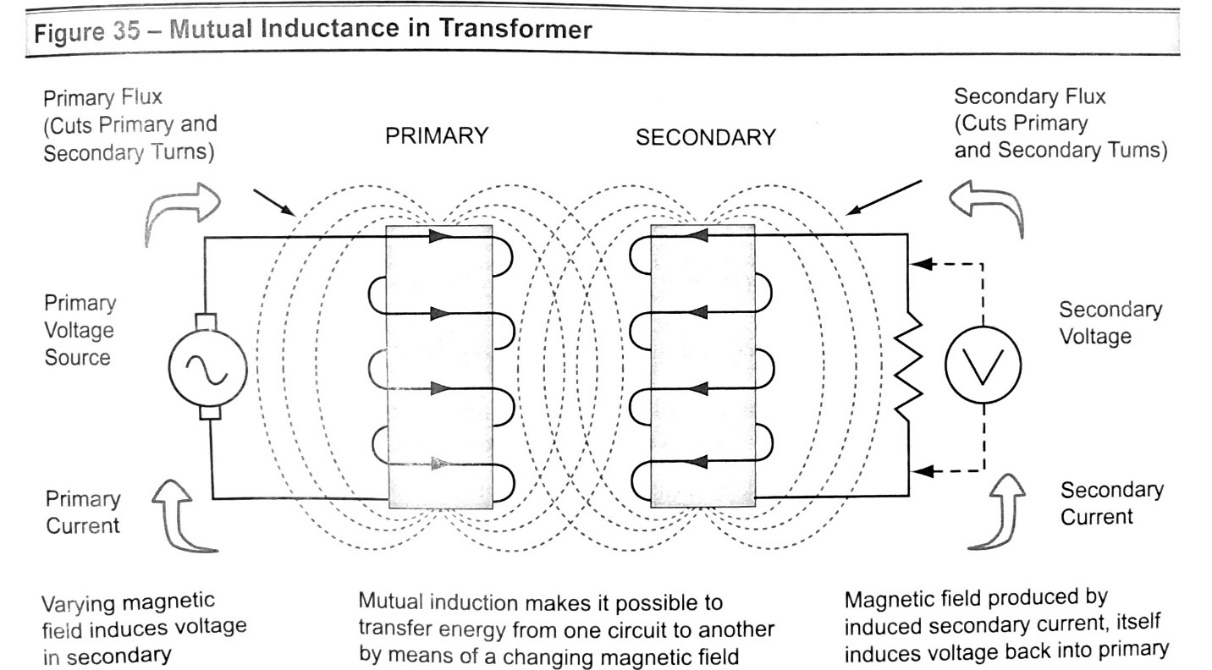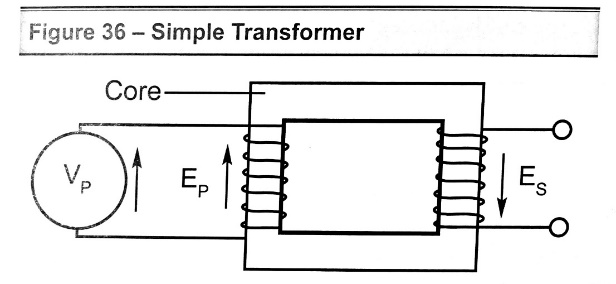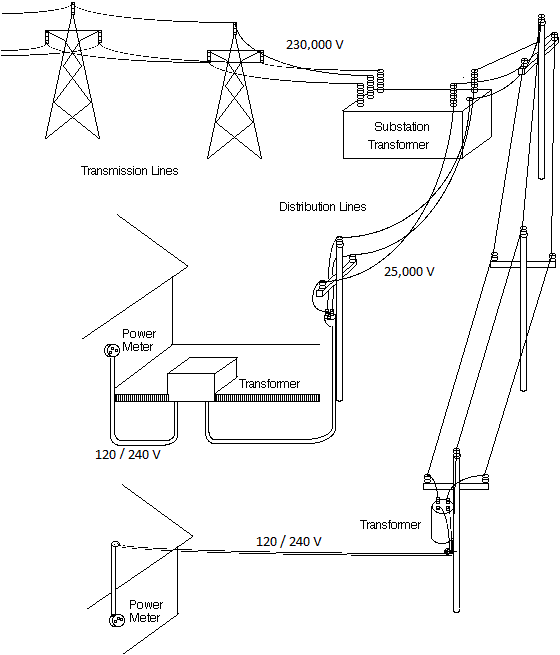4 Topic: Transformers (30m)
Instructions:
- Cover the following content as a group (either reading out loud or independently) then give an opportunity to answer any questions.
- Have students do the review questions independently, then take up answers.
Transformer
A transformer is an electromagnetic device that provides a magnetic linkage between two electrical circuits. Energy is transferred from one circuit to another by the magnetic field.
A transformer consists of a tank, a steel or iron core, and two or more separate coils or windings of wire. The windings are placed in a common magnetic path. On a single-phase transformer, two separate coils of wire are mounted on a common iron core. When a voltage and current are applied to one coil of wire, a strong electromagnetic field is created in the iron core. The electromagnetic field in the iron core induces a voltage and current into the second wire coil. Therefore, even though the two coils are not electrically connected to one another, voltage and current in one coil induce voltage and current into the second coil.2
AC (alternating current) can be converted easily to different voltages in a transfer without moving or electrically connected parts because the moving current induces a magnetic field, which induces a current in the other core. This allows us to transfer power a long distance at very high voltage and low current. The voltage can be stepped down at the point of use.
The reason it is an advantage to be able to transfer power with high voltage and low current is because large currents require thick wires, and energy gets lost through heat. This is both dangerous and inefficient.

Transformer Applications
- Increase AC voltage: Step up transformer
- Decrease AC voltage from distribution grid to household consumption: Step down transformer.
- Households use single phase transformers to step down primary voltage (14.4kV) to 120V/240V.
- Power transmission is more efficient with high voltage, low current.
- Instrumentation- being able to measure systems with very high voltages, the voltage must be stepped down for safety.
Transformer Winding

Figure SEQ Figure \* ARABIC 9 Line and secondary voltages
Conductor is wound around an iron core. If the number of turns (windings) around the primary core is larger than that of the secondary, the output voltage will be smaller. If the number of turns around the primary core is smaller than the secondary, the output voltage will be larger. The change in voltage is proportional to the ratio of primary to secondary turns.


Transformer cooling
Transformers are generally cooled with different types of oil. The oil has the capacity to carry heat away from the transformer. Also, the oil will have excellent dielectric capability (will not conduct electricity.) This oil poses an environmental hazard if the transformer is damaged and leaks.
In history, PCBs (Polychlorinated biphenyls) were used to cool transformers because of their excellent anti-flammable characteristics. This oil was found to be extremely hazardous to health and is no longer used. Some old transformers still in use may contain PCBs.
Some larger transformers at substations are cooled with forced air, but this is not the case for pole mount transformers.
Review Questions: Transformers (30m)
- ( T / F ) The primary purpose of a transformer is to change the resistance of a line.
- What are some uses of transformers? (List 3)
- What are some physical components of a transformer (circle all that apply)?
- A core
- Conductor winding
- A casing
- Coolant
- ( T / F ) There is a conductor carrying current from one core to another in a transformer.
- ( T / F ) Mutual induction occurs as a result of a moving current.
- ( T / F ) Energy is transferred from one core to another through a magnetic field.
- Pole mount transformers are generally cooled with
- Forced air
- Standing Air
- Water
- PCB’s
- Oil
Answer Key
1. F
2.
- Increase AC voltage: Step up transformer
- Decrease AC voltage from distribution grid to household consumption: Step down transformer.
- Households use single phase transformer to step down 220 to 110
- Power transmission is more efficient with high voltage, low current.
- Instrumentation- being able to measure systems with very high voltages, the voltage must be stepped down for safety.
3. all
4. F , 5. T , 6. T, 7. E
